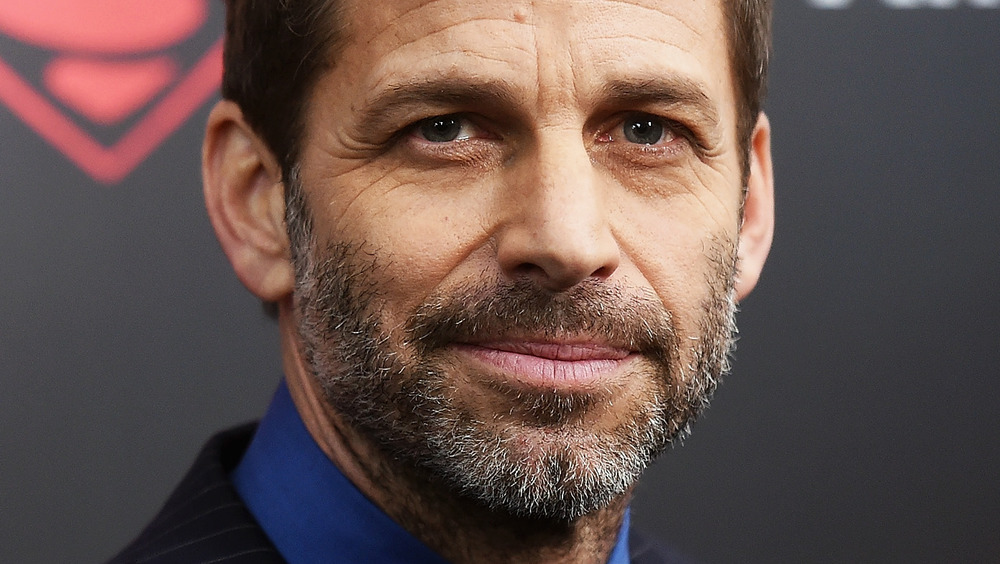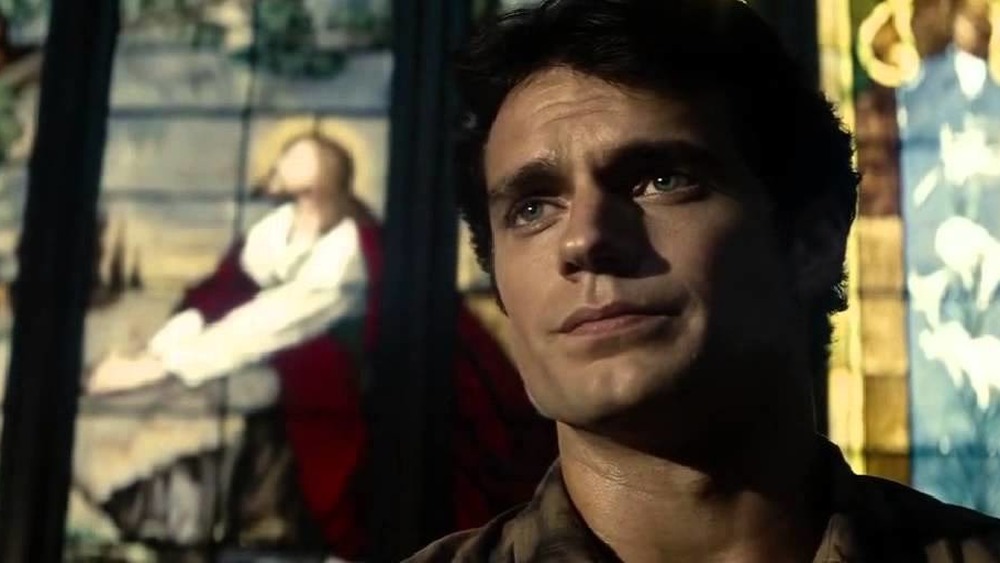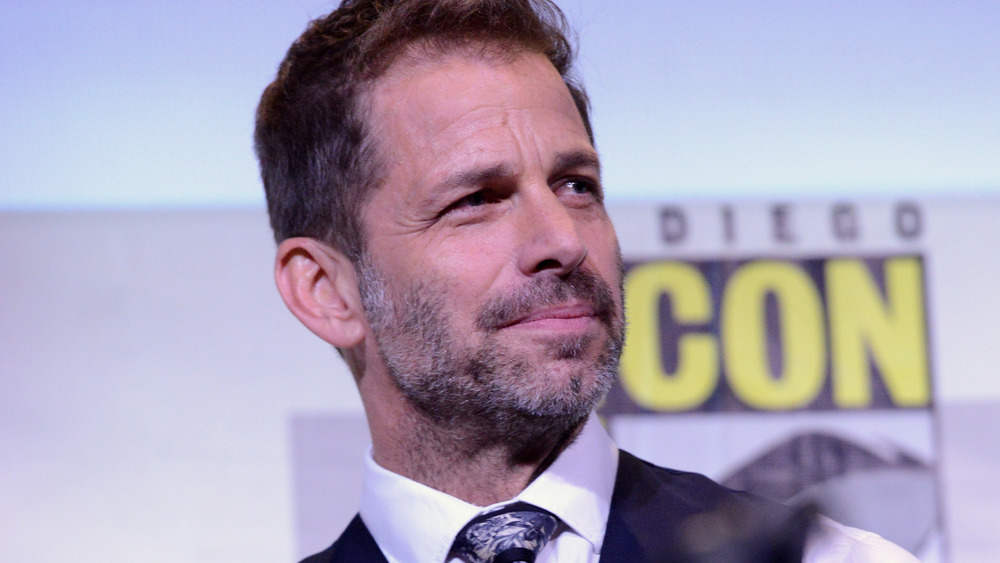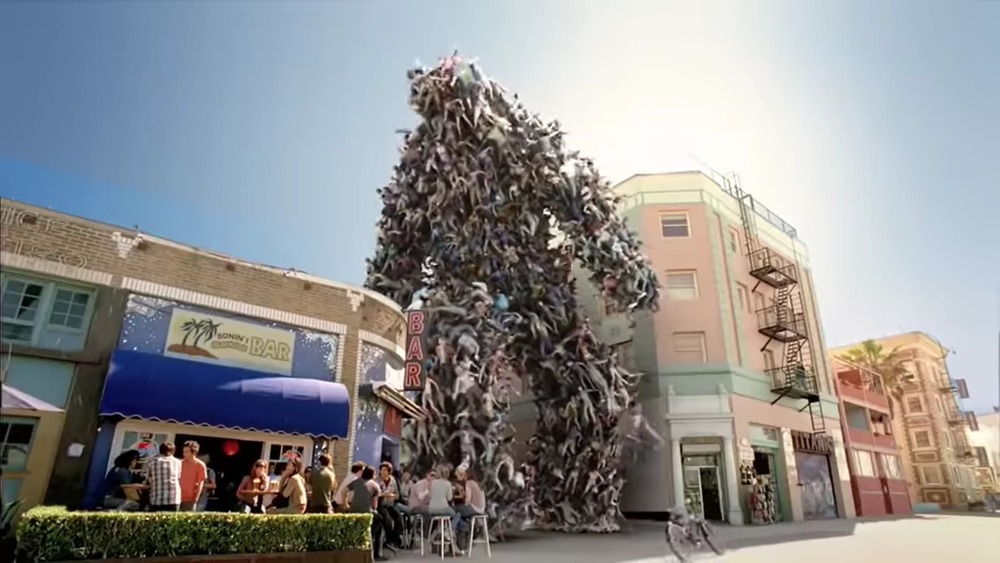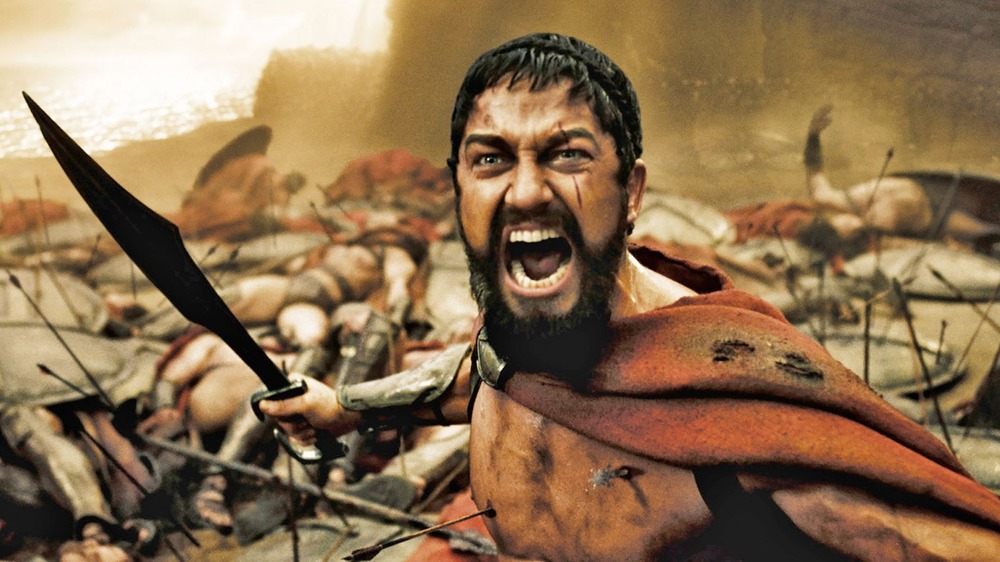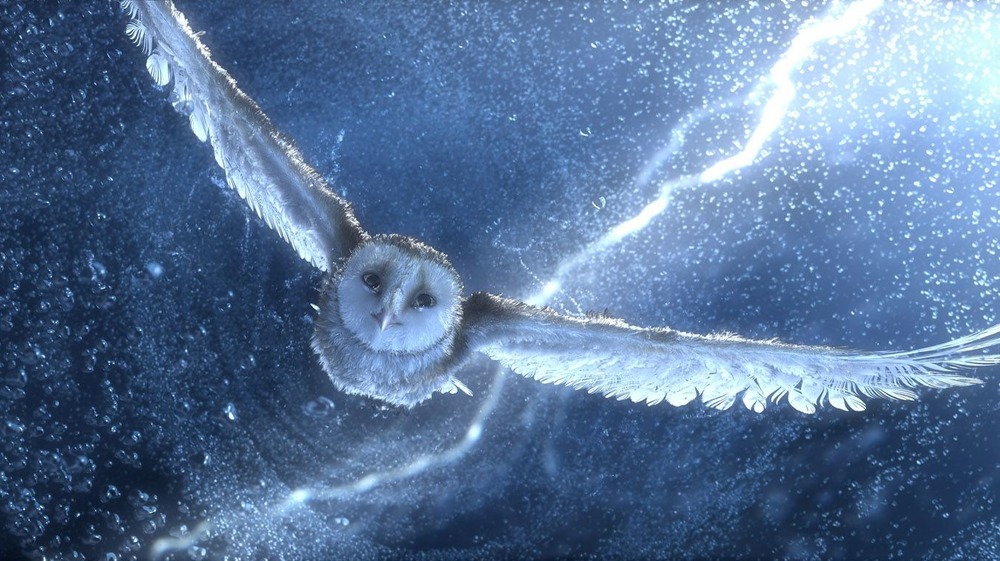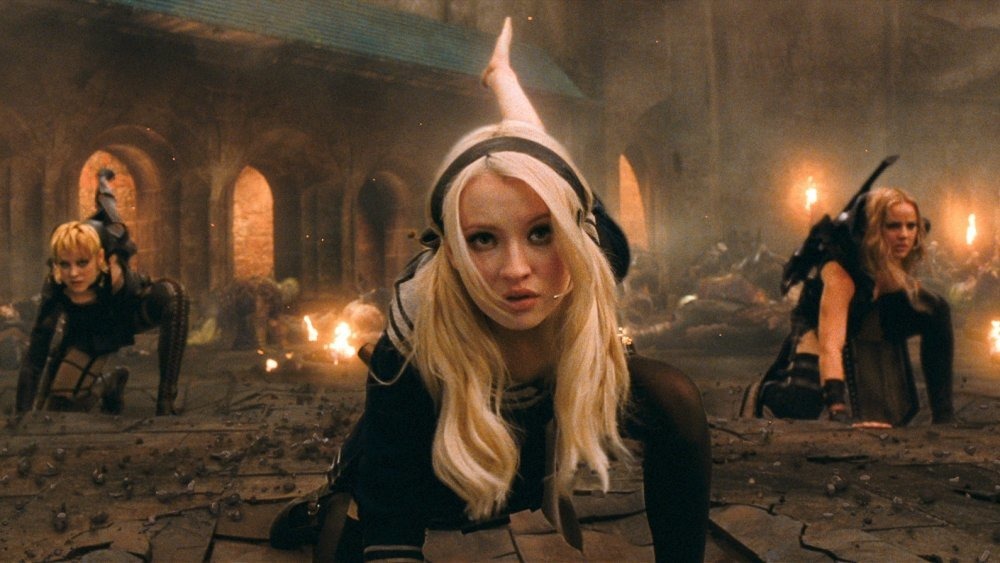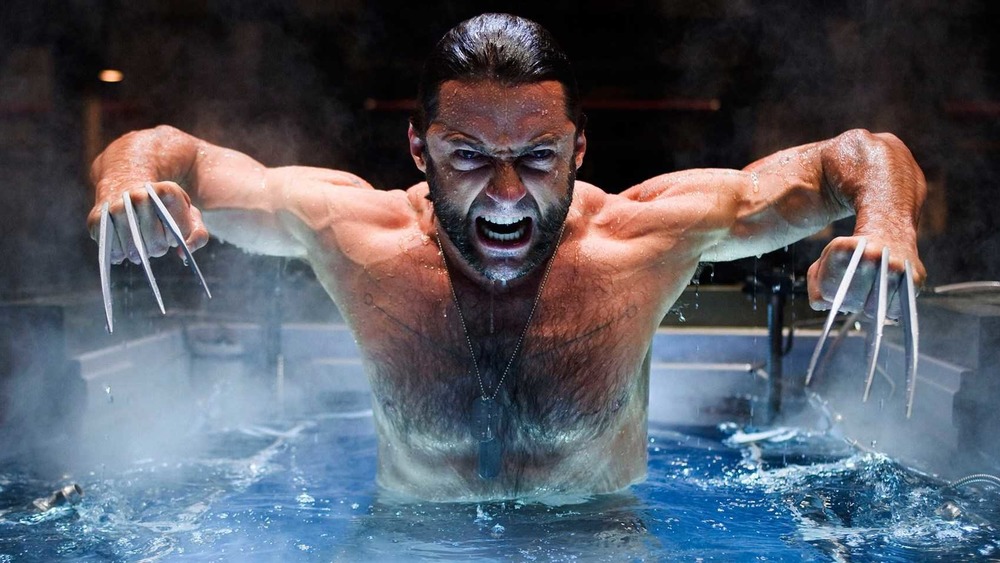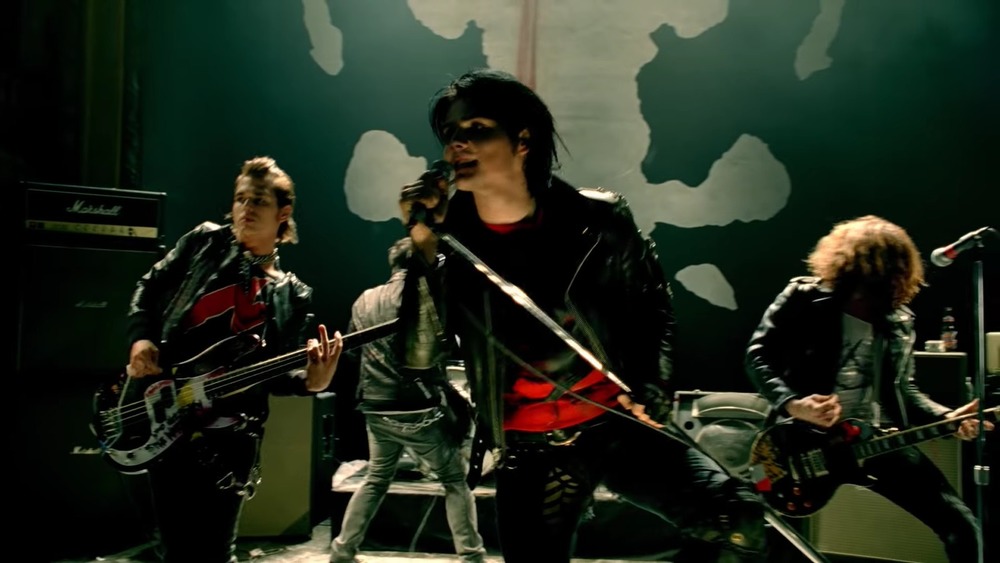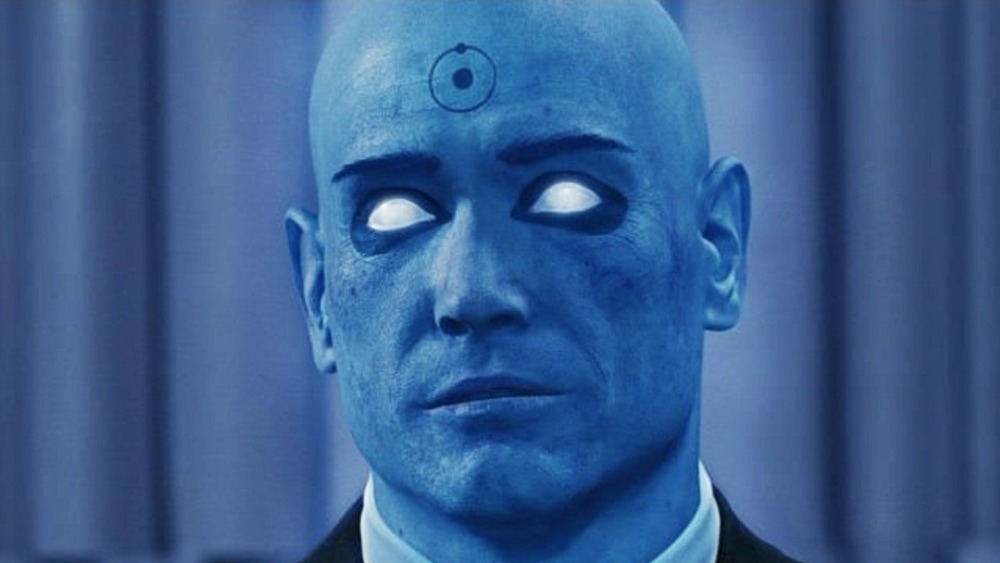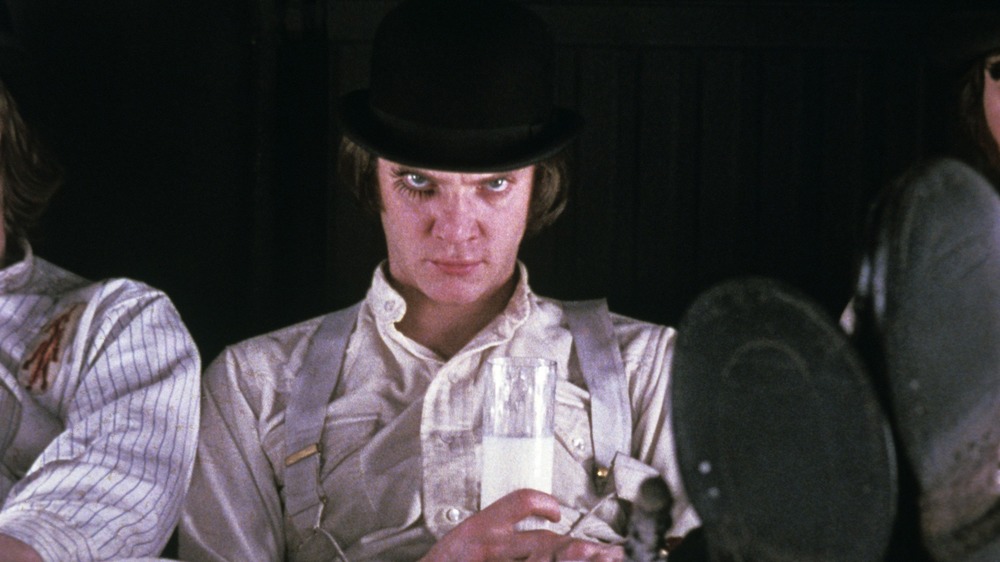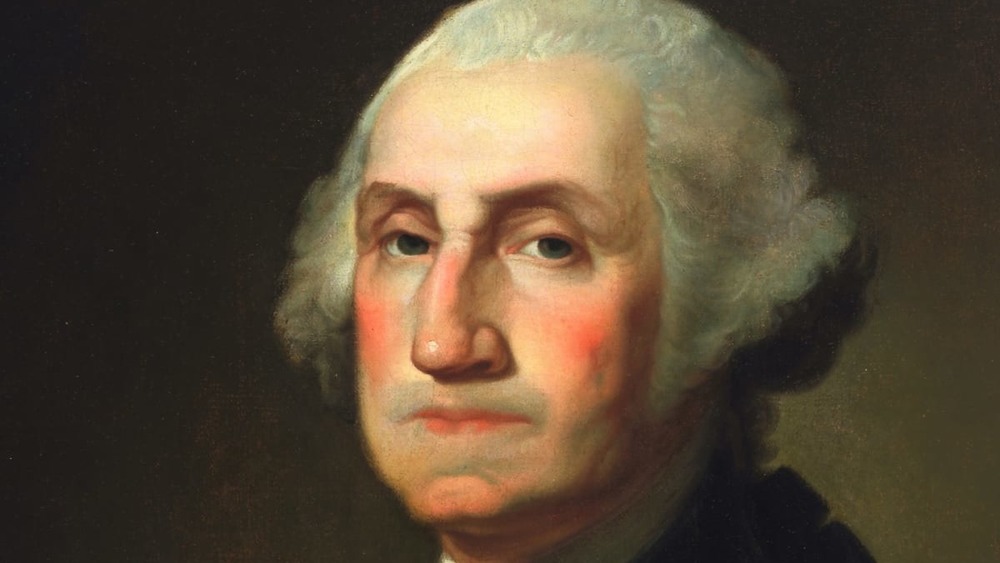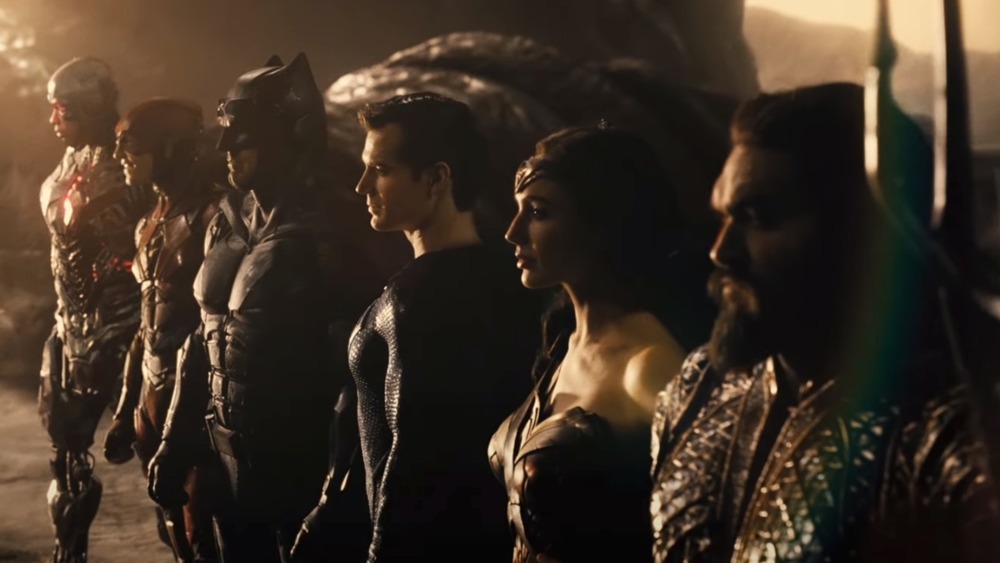The Untold Truth Of Zack Snyder
Few modern filmmakers draw as much conversation as Zack Snyder. Sometimes, that conversation is positive, such as James Cameron proclaiming that Snyder is one of the "guys who are creating their own cinematic language." Other times, there are critics who've said that Snyder's movies "are completely and utterly unoriginal." Whatever kind of response he's generated, though, Snyder has proven to be someone who can easily drum up discourse in his nearly two decades of directing feature-length films. However, despite all of the talk over his films, there are still plenty of details about Snyder as a filmmaker and a person that aren't widely discussed.
Some of these tidbits relate to behind-the-scenes details of his lesser-known works, such as Legend of the Guardians: The Owls of Ga'Hoole. Others date back to long before he started making movies, tying into Snyder's upbringing. Wherever these elements come from, they just prove that Zack Snyder — love him or hate him — can stir up discussion with ease.
Zack Snyder grew up in a religious household
Zack Snyder's origin story dates back to a small family in Greenwich, Connecticut. Snyder was raised by a pair of parents who weren't just devoted to their respective jobs and kids. They were also members of the Christian Science Church. A theological sect dating back to 1879, its most notable trait compared to traditional branches of Christianity is a belief that sickness can only be cured through prayer. Being raised with a heavy presence of this theology had a significant impact on Snyder's upbringing. "It was pretty hardcore," Snyder reflected about his childhood to Bloomberg.
While Snyder has stayed quiet about his theological beliefs as an independent adult, the ripple effects of his religious experiences as a child have certainly be felt in his cinematic works. Though he didn't inject a scene in Sucker Punch where characters talked about how prayer could cure all illnesses, Christian imagery and references have been seen throughout all his films. This is especially true of his DC Extended Universe movies, which feature numerous shots and lines of dialogue explicitly coding Superman as a modern-day equivalent to Jesus Christ. This trait is majorly present in his second foray into the DCEU, Batman v. Superman: Dawn of Justice, which features several instances of religious symbolism, including the Kryptonite spear that Batman uses to kill Superman. Just as religion played a major role in Snyder's upbringing, so too does it play a part in his feature-length works.
The director has struggled with dyslexia
It can be easy to forget when looking at photos of Zack Snyder talking to A-list actors and overseeing expensive sets laden with explosions, but even the biggest filmmakers are human beings. They're just as prone to having the same vulnerabilities as us common souls. For example, per Bloomberg, Snyder struggled with dyslexia as a child. According to the Mayo Clinic, dyslexia is defined as "a learning disorder that involves difficulty reading due to problems identifying speech sounds and learning how they relate to letters and words." Per Snyder himself, his dyslexia made his academic pursuits a struggle, though he apparently found a more successful outlet with sports in his public school days.
Dyslexia hasn't cropped up explicitly in Snyder's feature-length movies. However, an early scene in Man of Steel depicting a grade-school Clark Kent being overwhelmed by his superpowers (such as X-ray vision) could be easily read as being an allegory for children coping with any kind of disability or disorder. Meanwhile, the fact that Snyder saw himself as an academic outcast because of his dyslexia adds an extra personal layer to his characters, such as Soren in Legend of the Guardians, who are deemed societal outsiders. Whether those are incidental or intentional parallels, learning of Snyder's struggles with dyslexia does give one a new lens to view his various works through.
He worked as a commercial director
In the 1990s, many filmmakers who would go on to become big names got their start directing commercials. Such ads could provide studio executives a glimpse into a director's visual inclinations and whether or not they could handle longer forms of storytelling. For example, take none other than Zack Snyder.
Among his advertising efforts, there's an award-winning commercial for Jeep in 1997 and an ad for Budweiser. He was also behind the camera on a 1998 commercial for EB Beer that ended up getting banned from television, thanks to its depiction of some hedonistic military men. In addition to hawking products for big-name companies, Snyder's forays for commercials show that the director's affinity for grandiose imagery was around from the very start of his directorial career.
Since 2004, when Snyder directed his first feature-length movie (Dawn of the Dead), his work on commercials has understandably slowed down. However, just because he's got big-budget productions to handle doesn't mean he's abandoned the domain entirely. In 2007, the same year he helmed 300, Snyder also directed a lavish commercial for Miller Lite. Through this ad, it became apparent that Snyder never forgot about his roots, which, like so many other commercials from future auteurs, helped to lay the foundation for his filmmaking skills. In other words, the genesis of 300 can be found in random commercials from the '90s.
Zack Snyder shot 300 almost entirely indoors
As late as the mid-2000s, it was still uncommon for movies to be entirely shot on green screen unless they were directed by George Lucas. But taking cues from the groundbreaking visual effects wizardry done on Robert Rodriguez's work on Sin City, Zack Snyder took artificial worlds to a whole new level with 300. This would be achieved by having the project shot almost entirely on green screens. In the process, 300 could utilize digital environments that more directly evoked the visuals of the film's comic book origins. Those illustrations had helped put the original 300 graphic novel on the map, and now they would be preserved for both moviegoers and Zack Snyder. "That's just what I'm drawn to aesthetically," the director said to the Los Angeles Times about the comic's visual aesthetic. "I like the relentlessness and over-the-top nature of the graphic novel. So the pace and design, that hysterical weirdness, come from that."
Snyder's ambitions manifested in a movie that truly committed to a world almost entirely realized through digital visual effects. In all of 300, only one scene, consisting of men riding on horseback, was shot in exterior environments. Otherwise, the actors performed on large green screen-covered soundstages with backgrounds that would be filled in at a later date. In the process, Snyder not only lent 300 a distinctive look but also pioneered a filmmaking style that's still regularly employed to this very day.
His love for Joseph Campbell inspired Legend of the Guardians
The most apparent anomaly in Snyder's filmography is Legend of the Guardians: The Owls of Ga'hoole. An adaptation of a book series by Kathryn Lasky, Legend of the Guardians is a PG-rated, animated kids movie about talking owls engaging in a fantasy quest. Full of celebrity voice-overs and with animation done by Happy Feet's Animal Logic, it sounds like a conventional American animated movie but a totally ill-fitting project for the man responsible for delivering Doctor Manhattan's casual nudity or the gory violence of 300. But Snyder was indeed the director of Legend of the Guardians, and he was drawn to it due to his love for Joseph Campbell, an author whose influence on Snyder has been felt all throughout his career.
"I do love Joseph Campbell archetype stories, and I felt like [Guardians protagonist] Soren ... you have this young owl who like evil comes to his forest ... and then he and his band of friends have to go ... fight this evil," Snyder explained to Collider. "I know it sounds in some ways like oh, it's really straight forward, but ... I'm like, 'Oh, that's cool. I can make that awesome because I think that it's such classic story.' It's such a mythic story in that way." Snyder's affinity for classical stories led to him taking on his first fully animated kids movie, making Legend of the Guardians far less an outlier in his resume than it may initially seem.
He wanted Sucker Punch to be R-rated
For his initial three movies, Zack Snyder was all about making R-rated blockbusters. Dawn of the Dead, 300, and Watchmen reveled in the qualities that earned them their strict MPAA ratings. Nudity, blood, extreme profanity — all were found in abundance in these earliest Snyder features. When it came time for his fourth live-action feature, Sucker Punch, initial announcements from outlets like Entertainment Weekly made it clear the project would also be rated R. This seemed fitting considering the film would tackle weighty topics like sexual assault and the objectification of women through the male gaze.
However, those initial R-rated ambitions never came to be as Sucker Punch was sent to theaters with a PG-13 rating. What happened? It would eventually be revealed that the studios behind Sucker Punch were mandating that the film get a PG-13 rating, which meant cutting a number of critical scenes and re-submitting the film before the MPAA board multiple times. In the process, scenes meant to reinforce the ghastly nature of the movie's real-world villains were removed, as were a number of sexual elements. Through cutting these scenes, Sucker Punch became the first live-action Zack Snyder movie to garner a PG-13, and many complained that its thematic ambitions were stifled by its rating. That original creative vision was retained for an R-rated version of the production that made its way onto the film's home video release.
Zack Snyder almost directed X-Men Origins: Wolverine
Beginning with Watchmen, Snyder has become a filmmaker largely associated with adaptations of DC titles. This association includes him kicking off the entire DC Extended Universe with 2013's Man of Steel and expanding that franchise further with Batman v Superman: Dawn of Justice. However, there was a point in time that Snyder was approached to helm an adaptation of a Marvel character.
Back in 2007, fresh off his success with directing 300, Snyder was offered the chance to direct X-Men Origins: Wolverine, a movie that starred one of Snyder's favorite superheroes. However, Snyder turned the film down due to his perception that the project would be sanitized for a PG-13 rating, as well as prior commitments. "Wolverine would be cool if it was rated R," Snyder said (via Screen Rant). "I read the script, it's cool, but there's no way. They asked me about it, but I just said, I don't know. That would be a thing that, if I didn't have Watchmen, I would be interested in Wolverine."
He directed a My Chemical Romance music video
For one brief moment in the late 2000s, edgy high schoolers got a massive dose of serotonin once they saw the news that My Chemical Romance and Zack Snyder had joined forces for Watchmen. Not since Cat Stevens delivered tunes for Harold & Maude were a feature film and a band so perfectly made for each other. Though Watchmen largely features period-era songs that match its 1980s setting, this collaboration was still possible thanks to the movie's Watchmen soundtrack, which would feature My Chemical Romance covering the Bob Dylan song Desolation Row.
To provide extra publicity for both the tune and the Watchmen movie, Snyder directed a music video for the band's cover song. It was familiar territory for Snyder, who'd directed music videos all throughout the 1990s. The music video is largely a standalone creation that can be enjoyed separated from the Watchmen film. However, given that it's a tie-in to the movie, subtle references to Watchmen appear throughout, such as that famous smiley face button. The visual aesthetic of the music video also matches both Watchmen the movie and Snyder's work as a director. And with this music video, one of the biggest directors of the 2000s united with one of the biggest bands of the 2000s, with both entities united in a love for embracing darkness and subverting mainstream norms. It was a match made in Hot Topic heaven.
Doctor Manhattan is Zack Snyder's favorite superhero
Over the course of his career, Snyder has garnered a number of opportunities to direct some of the most famous superheroes of all-time. These have included everyone from Superman to Wonder Woman to Batman. Given that he's worked with such seminal caped crusaders over the course of multiple movies, it wouldn't be a shocker if one of them was his personal favorite. However, when pressed about his all-time superhero, Snyder revealed that his pick wasn't a classic vigilante but rather a deconstruction of such characters.
"It's gotta be Doctor Manhattan from Watchmen, I think," Snyder said (via Screen Rant), referring to the blue-skinned figure played by Billy Crudup in Snyder's 2009 film. "For me, he's like this super cool, quantum superhero," with Snyder noting Manhattan having "time, space, reality" at his "fingertips" being an especially interesting aspect of the character. It's certainly true that the godly powers of Doctor Manhattan do make him an utterly unique creation among adults-only superheroes.
Plus, beyond his superpowers, Doctor Manhattan has a lot of qualities that seem like they'd be immediately appealing to Snyder. Given that this filmmaker has shown a deep fondness for deconstruction even in his crowd-pleasing DCEU directorial efforts, it shouldn't be a surprise that Doctor Manhattan, a skewering of Superman-esque figures, is his all-time favorite superhero. Sorry, Superman and Batman, maybe travel to Mars or cover yourself in blue paint if you want to Snyder's favorite.
A Clockwork Orange is one of his favorite movies
Zack Snyder has always professed a deep love for movies. This passion was apparent in a Newsweek profile examining the way movies have influenced the filmmaker's life. Needless to say, Snyder has been strongly impacted by his favorite films, including the Stanley Kubrick feature A Clockwork Orange. In describing why he liked Orange so much, Snyder chalked it up to the feature being "shockingly unapologetic."
That very same quality had earned A Clockwork Orange mixed marks from critics in its initial theatrical release, with the likes of Pauline Kael saying that the films' aesthetic resulted in "an abhorrent viewing experience." One person's trash is another person's treasure, though, and the very same bravura that repelled some was what drew Snyder to A Clockwork Orange. After all, he's often spent his career making similarly divisive movies. Across his assorted directorial efforts, Snyder has always made films that are also "shockingly unapologetic," from the grisly carnage in 300 and the frank nudity in Watchmen to the stark reinventions of classic DC superhero's in his DCEU efforts. Snyder is never one to make movies that sit on the sidelines and play it safe. So of course he'd appreciate a movie like Stanley Kubrick's A Clockwork Orange, which works overtime to shock the audience and challenge who they're sympathizing with.
His dream project is a George Washington movie
Over the years, Zack Snyder has talked about numerous projects that have never quite gotten off the ground. One example is his adaptation of Ayn Rand's The Fountainhead, and another is a war drama known as The Last Photographer. Perhaps most distinctive of all his currently unmade projects is one that's near and dear to his heart — a feature film about America's first president, George Washington.
"We were talking about it," Snyder said in 2016 (via Slash Film). "The first thing we asked was, well, how are we going to make it look? I pointed at [a painting of George Washington crossing the Delaware]. It looks like 300. It's not that hard." While some directors shift things into a more serious filmmaking gear when tackling period pieces, Snyder makes it apparent that he'd like to tell a story about George Washington with the exact same stylized flair as his action movies.
However, there have been no further updates on the project in the years since Snyder first brought it up. Given that there isn't a definitive cinematic take on the first U.S. president like there is with fellow presidents, such as Abraham Lincoln and John Quincy Adams, Hollywood is bound to try its hand at a George Washington movie sooner or later. When they do, perhaps that'll be the time Snyder gets to filter Washington through his unique creative prism.
The song Hallelujah has a personal meaning to Zack Snyder
Leonard Cohen's song Hallelujah has found itself utilized in several feature films, but it's been especially prominent across Zack Snyder's works. It first made its way into Zack Snyder's filmography through 2009's Watchmen, which featured the tune playing over a sex scene between Nite Owl and Silk Spectre. The sequence drew a widely divided response, particularly in regards to its needle drop. The song would reappear connected to a Snyder project in the first full trailer for Zack Snyder's Justice League.
Why is the song so prominent in Snyder's works? Shortly after that Justice League trailer debuted, the director offered some insight into what kind of personal meaning the song had for him. "It's a really personal song for the family and for all of us," Snyder explained (via Cinema Blend). "It's something that I just felt that was right for this. That's why. I just think that that song, in particular, really, for all of us, it has significance beyond just the movie. I think we all love the song, and it just felt like, as I was trying to wrangle this whole thing into the 'why' of it, I just felt like that song was the right way to do it."
Snyder's comments here reference the tragedy of his daughter committing suicide during the initial production of Justice League, which has lent a whole new meaning to this tune for Snyder.
If you or anyone you know is having suicidal thoughts, please call the National Suicide Prevention Lifeline at 1-800-273-TALK (8255).
